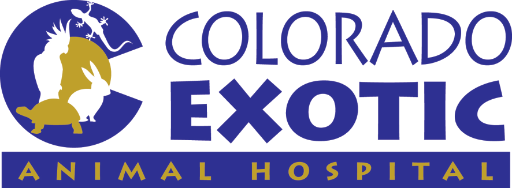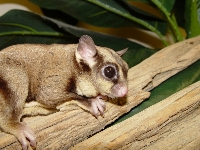Sugar Glider Nutrition
Proper diet is imperative for keeping a sugar glider healthy and happy. Nutritional problems are the most common problems seen by veterinarians and include obesity, malnutrition, low bone density, dental disease, heart disease, nervous system disorders, muscle disorders, and cataracts.
Past attempts at formulating diet for sugar gliders did their best to simulate the natural diet of sugar gliders, which consists primarily of pollen, nectars, insects and saps. Examples of these previous attempts included diet such as High Protein Wombaroo (HPW) and American Sugar Glider Diet (ASG). A person runs into problems when trying to feed these diets. Not only do they require a large amount of preparation time but they still fall short of meeting the nutritional requirements of a captive sugar glider. They tend to be inconsistent nutritionally and often are high in fat. Captive sugar gliders should be expected to live 2-3 times longer than those in the wild and spend far less time foraging. Today’s diet recommendations better reflect these two realities.
Pelleted Diets:
A good, quality sugar glider extruded pellet diet should make up approximately 75% of a sugar glider diet. Recommended brands include Exotic Nutrition’s Premium Diet, Mazuri Insectivore Diet, and Nutrimax sugar glider diet. Feed approximately 1/4 to 1/3 of a cup (2-3 oz.) daily.
Fresh Fruits and Vegetables:
Approximately 25% of a sugar glider’s diet should consist of fresh fruits and vegetables, equivalent to 2 to 3 tablespoons daily or about 1/8 of an apple. Wash thoroughly prior to placing into the cage, placing fresh in the cage in the evening and remove leftovers the following morning to prevent spoilage. Organic may be best to avoid exposure to pesticides and other toxic chemicals. Avoid fruits and vegetables with high levels of oxalates because these can sometimes interfere with calcium absorption. These include: blackberries, raspberries, strawberries, carrots, spinach, pears, lettuce, collard greens, and beets.
It is important to control the amount of fruits and vegetables offered as sugar gliders often will choose these sweet, tastier items over the more nutritious pellets.
Calcium-Balanced Multivitamin Supplement:
A calcium-based multivitamin should be sprinkled lightly over fruits and vegetables every other day or can be mixed with organic yogurt or natural applesauce and hand-fed. Recommended brands include VitaMax or Glide-A-Mins.
Treats:
Treats should make up no more 5% of a sugar glider’s diet. Appropriate treats are live insects such as mealworms or crickets, small amounts of flavored yogurts, and preservative free commercially available treats.
Foods to be Discouraged or Avoided:
Chocolate (toxic), dairy products (except small amounts of flavored yogurt as treats), cheese, milk, ice cream, foods high in oxalates (see above), whole kernel corn (dry or fresh), grapes & raisins, bird food, dog food, cat Food, nuts and seeds.
Transitioning Your Sugar Glider to a Healthy Diet:
It is important to transition gradually over about 30 days to decrease stress and help your sugar glider accept the new diet. Sudden changes in diet can lead to digestive problems, including diarrhea. Watch you sugar glider’s stool very closely and if diarrhea is noted, contact your veterinarian immediately. Remember, the transition is about getting your pet on a healthy diet. While a sugar glider may prefer sugary and fattening items, in the long run these items will lead to serious health problems.
For more information on Sugar Glider Nutrition visit the Association of Sugar Glider Veterinarians website at www.asgv.org.


